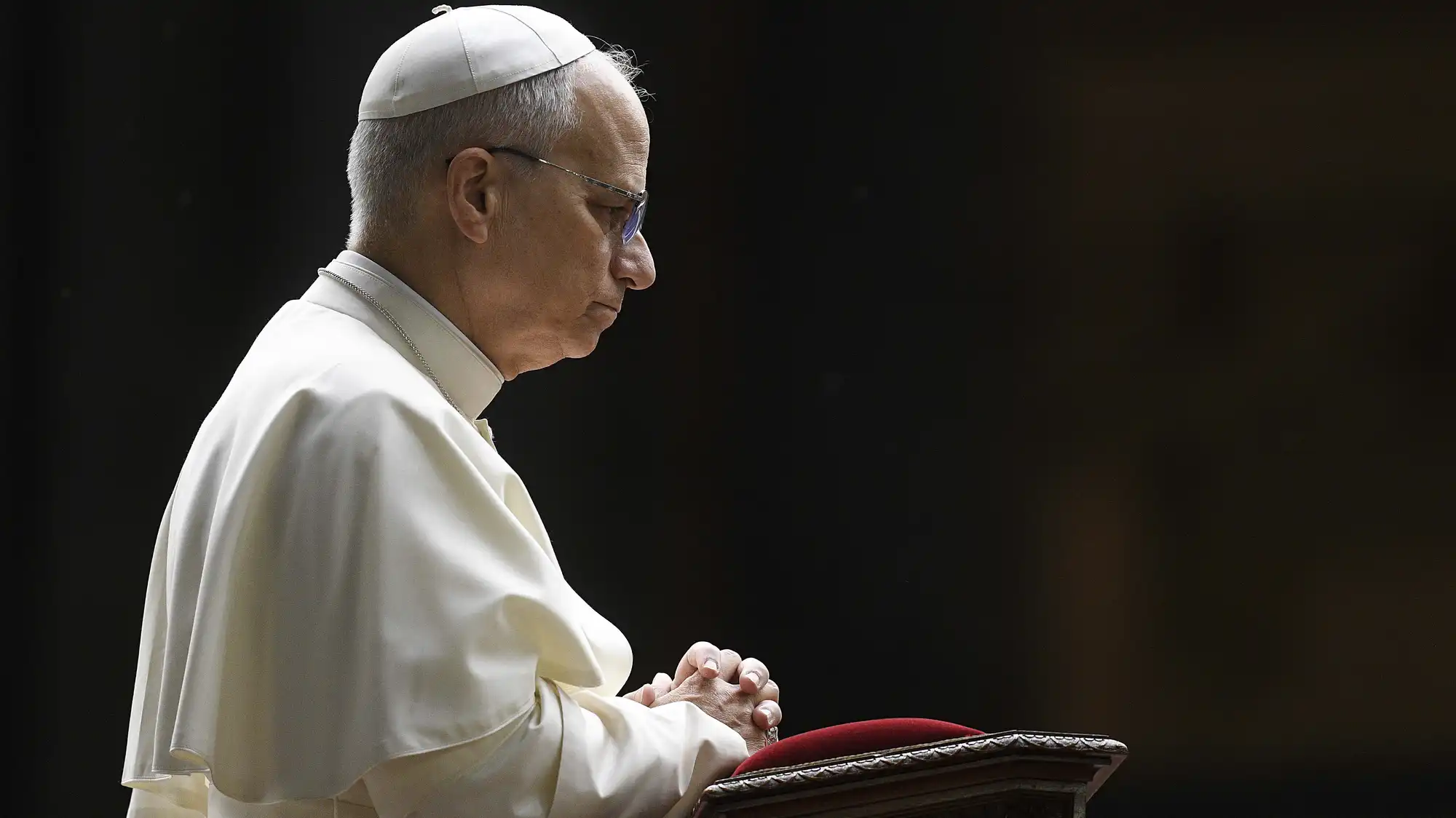The pope calls on Catholics to take on economic inequality – marketplace.org

Papal Exhortation “Dilexi te” Aligns with Sustainable Development Goals on Poverty and Inequality
A recent apostolic exhortation from Pope Leo XIV, titled “Dilexi te,” has placed significant emphasis on global economic disparity. The document directly addresses the gap between the rich and the poor, challenging prevailing economic structures and calling for immediate action. This teaching aligns closely with several key United Nations Sustainable Development Goals (SDGs), particularly those focused on poverty, inequality, and just institutions.
Core Tenets and Alignment with SDG 1 (No Poverty)
The central thesis of the document is a call to action against poverty, framing it as a consistent and historical focus of Christian social teaching. It posits that addressing the needs of the poor is a fundamental responsibility, directly supporting the objectives of SDG 1. The exhortation refutes the notion that poverty is an inevitable consequence of social life.
- Call for Immediate Action: The document urges individuals and institutions not to wait for market forces to resolve poverty, advocating for direct and immediate intervention.
- Moral Responsibility: It presents a moral imperative to engage with the causes of poverty, both personally and structurally.
- Rejection of Inevitability: The teaching challenges the ideological assumption that poverty is an unchangeable reality, instead promoting the view that a more equitable world is achievable.
Challenging Economic Structures to Advance SDG 10 (Reduced Inequalities)
The Pope’s teaching directly confronts what it terms “unjust economic structures,” a theme that resonates strongly with SDG 10, which aims to reduce inequality within and among countries. The document’s theological perspective asserts that the “goods of creation” are intended for the benefit of all humanity. Radical inequality is therefore presented as a systemic failure.
- Critique of Distribution: The exhortation identifies the radically uneven distribution of global goods as a primary symptom of a flawed economic system.
- Focus on Human Dignity: It highlights how economic structures can undermine human dignity, creating powerlessness and denying equal opportunities to marginalized populations.
- Systemic Change: The document advocates for more than simple redistribution, calling for a fundamental re-evaluation of the economic systems that perpetuate inequality.
A Call to Action for Multi-Stakeholder Partnerships (SDG 17)
The exhortation is intended as a catalyst for new conversations and actions across society, reflecting the spirit of SDG 17 (Partnerships for the Goals). It serves as a reminder that faith-based perspectives have a role in shaping economic and political discourse. The document calls upon various actors to recognize their role in creating a more just economic order.
- Business Leaders: Urged to consider the social and human impact of their operations beyond profit.
- Politicians: Called to create policies and structures that promote equity and protect the vulnerable.
- Individuals: Reminded that their personal economic decisions contribute to the broader system and that they have the capacity to foster change.
Broader Implications for Sustainable Development
Beyond its primary focus on poverty and inequality, the message of “Dilexi te” has implications for other sustainable development objectives. By challenging dominant economic paradigms, it encourages an imaginative rethinking of how societies can be organized to promote universal well-being.
- SDG 8 (Decent Work and Economic Growth): The call to uphold human dignity aligns with the goal of promoting inclusive and sustainable economic growth and decent work for all.
- SDG 16 (Peace, Justice and Strong Institutions): By demanding a confrontation with “unjust structures,” the teaching supports the development of effective, accountable, and inclusive institutions at all levels.
In summary, the papal exhortation functions as a creative invitation to challenge mental and institutional structures, fostering a global dialogue aimed at achieving a more sustainable and equitable future in line with the core principles of the SDGs.
Relevant Sustainable Development Goals (SDGs)
SDG 1: No Poverty
- The article is centered on Pope Leo XIV’s teaching which focuses on poverty. The text explicitly states that the document is “an engagement with poverty and the reality of those who are made poor.” It discusses the moral and structural responsibility to address and solve poverty, rather than accepting it as an “inevitability of social life.”
SDG 10: Reduced Inequalities
- This is a primary theme of the article. The Pope’s teaching is introduced as focusing “on the gap between the rich and the poor.” The analysis repeatedly mentions “inequality,” “radical inequality,” and the “radically unevenly distributed” nature of goods as a central concern. The Pope calls on Catholics to confront “unjust [economic] structures” that perpetuate this inequality.
SDG 8: Decent Work and Economic Growth
- While less direct, this goal is relevant through the article’s critique of mainstream economics. The Pope’s message that people “shouldn’t wait hoping the market will solve poverty” and the call to challenge “unjust [economic] structures” points to the need for a more inclusive and sustainable economic model that benefits all, which is a core principle of SDG 8.
Specific SDG Targets
Targets under SDG 1: No Poverty
- Target 1.2: By 2030, reduce at least by half the proportion of men, women and children of all ages living in poverty in all its dimensions according to national definitions. The Pope’s call to action is urgent, stating, “The time to help poor people… the time is now,” implying a goal of significant and immediate poverty reduction.
- Target 1.4: By 2030, ensure that all men and women, in particular the poor and the vulnerable, have equal rights to economic resources. The article directly addresses this by highlighting the problem of people who are “utterly powerless in the face of those structures to realize their own goals, to have equal opportunities.”
Targets under SDG 10: Reduced Inequalities
- Target 10.1: By 2030, progressively achieve and sustain income growth of the bottom 40 per cent of the population at a rate higher than the national average. The core focus on “the gap between the rich and the poor” and “radical inequality” directly relates to the income disparities this target aims to address.
- Target 10.2: By 2030, empower and promote the social, economic and political inclusion of all. The article’s concern that the dignity of the poor is “undermined by the way in which they have to live” speaks to the need for greater social and economic inclusion.
- Target 10.3: Ensure equal opportunity and reduce inequalities of outcome. The Pope’s call to confront “unjust [economic] structures” and the text’s reference to a lack of “equal opportunities” for the poor align perfectly with this target.
Implied Indicators for Measurement
- The gap between the rich and the poor: The article explicitly identifies this as the central focus of the Pope’s teaching. This serves as a primary, albeit general, indicator of inequality.
- Distribution of goods: The article implies that the level of uneven distribution of “the goods of creation” is a key indicator of a flawed economic system. It notes that “radical inequality” shows “a failure to meet that basic criteria” that goods are for the benefit of all.
- Level of equal opportunities: The text points to the lack of “equal opportunities” as a critical issue for those in poverty. Measuring access to economic and social opportunities is an implied method for tracking progress.
- Preservation of human dignity: The article presents the undermining of dignity as a crucial consequence of poverty and inequality. It states that a key concern is when “their dignity is undermined by the way in which they have to live,” making the state of human dignity a qualitative indicator of structural success or failure.
Summary of SDGs, Targets, and Indicators
| SDGs | Targets | Indicators (Implied from Article) |
|---|---|---|
| SDG 1: No Poverty |
|
|
| SDG 10: Reduced Inequalities |
|
|
| SDG 8: Decent Work and Economic Growth |
|
|
Source: marketplace.org
What is Your Reaction?
 Like
0
Like
0
 Dislike
0
Dislike
0
 Love
0
Love
0
 Funny
0
Funny
0
 Angry
0
Angry
0
 Sad
0
Sad
0
 Wow
0
Wow
0




















































.jpg.webp?itok=0ZsAnae9#)

























